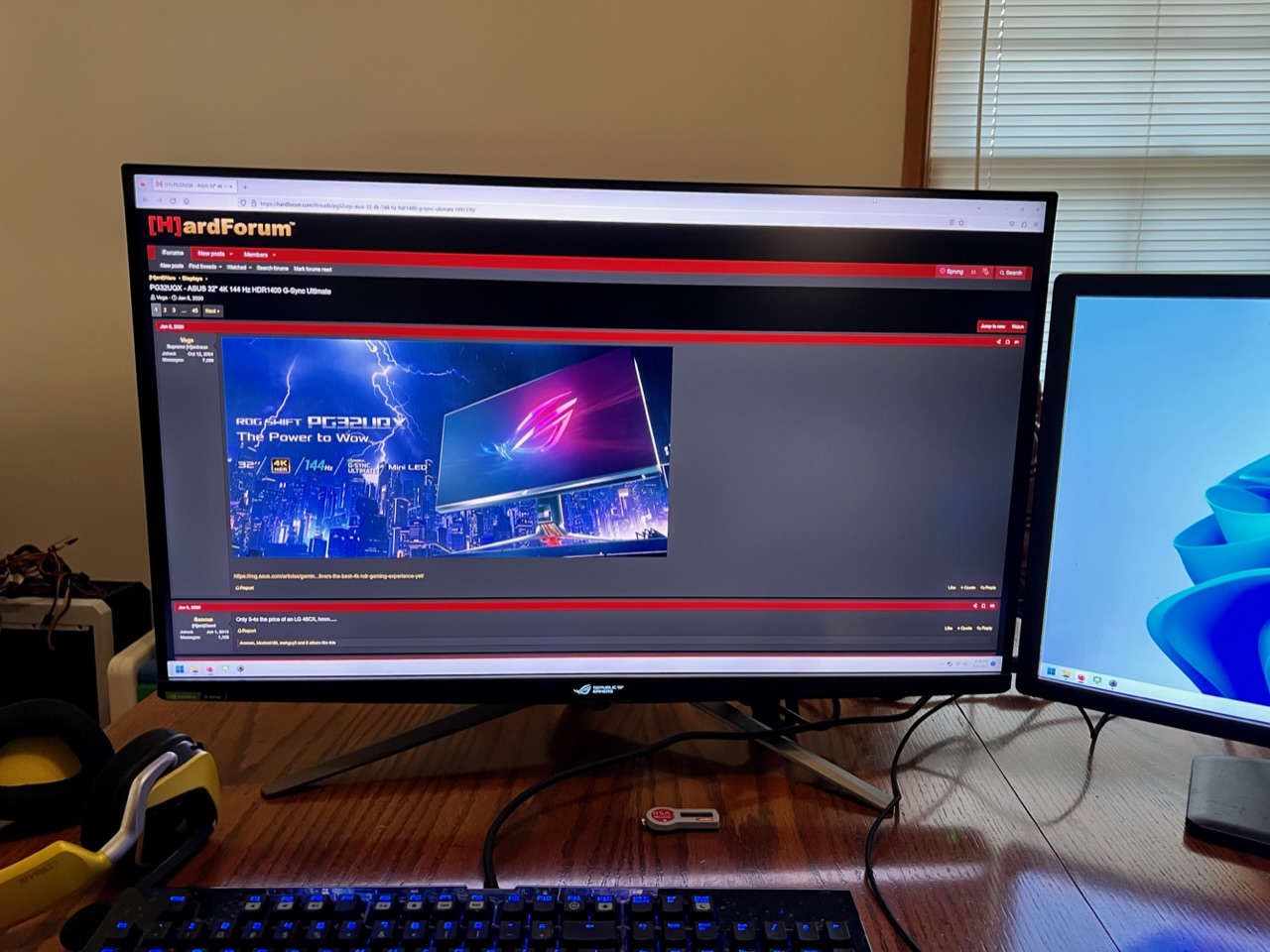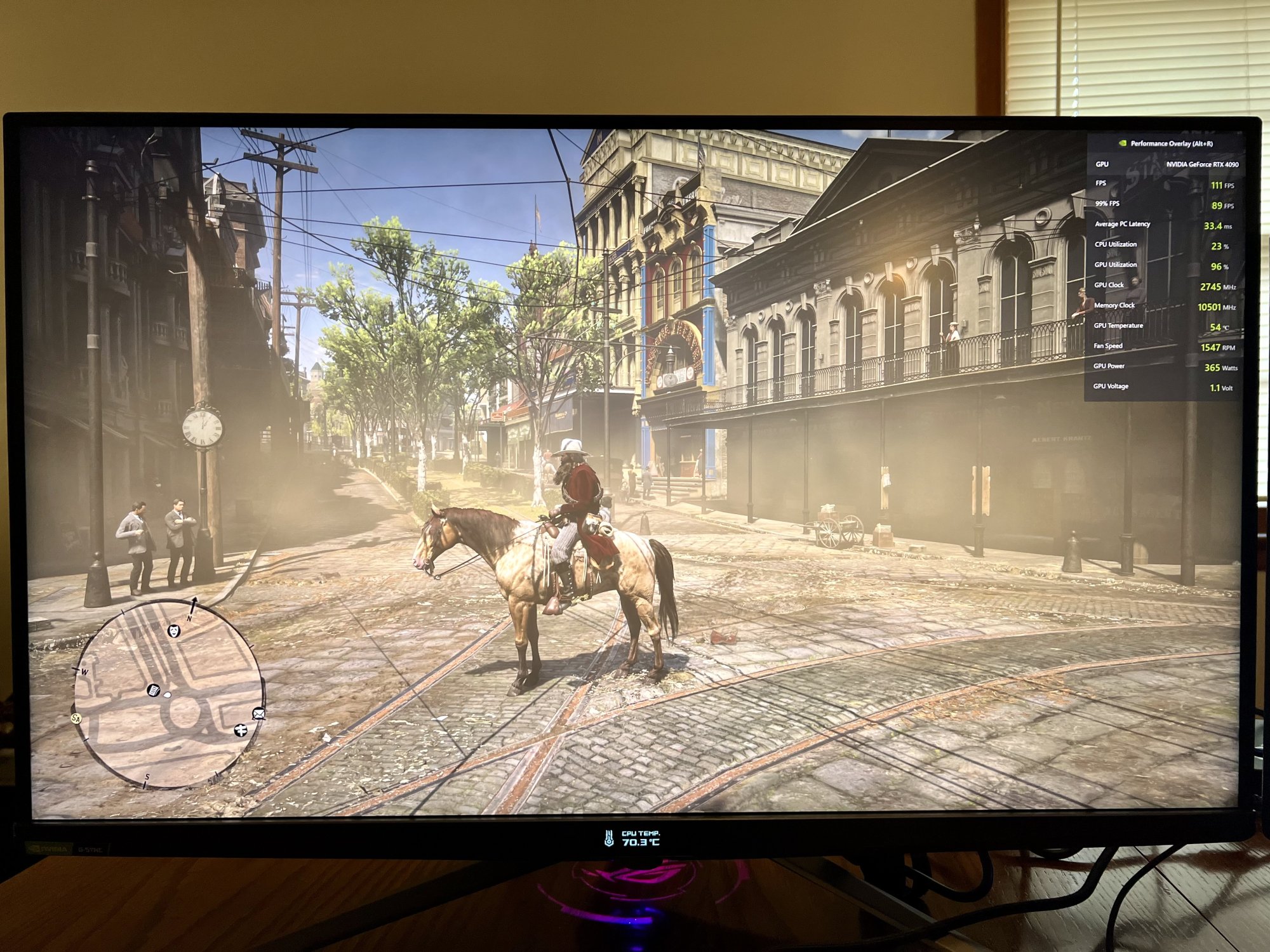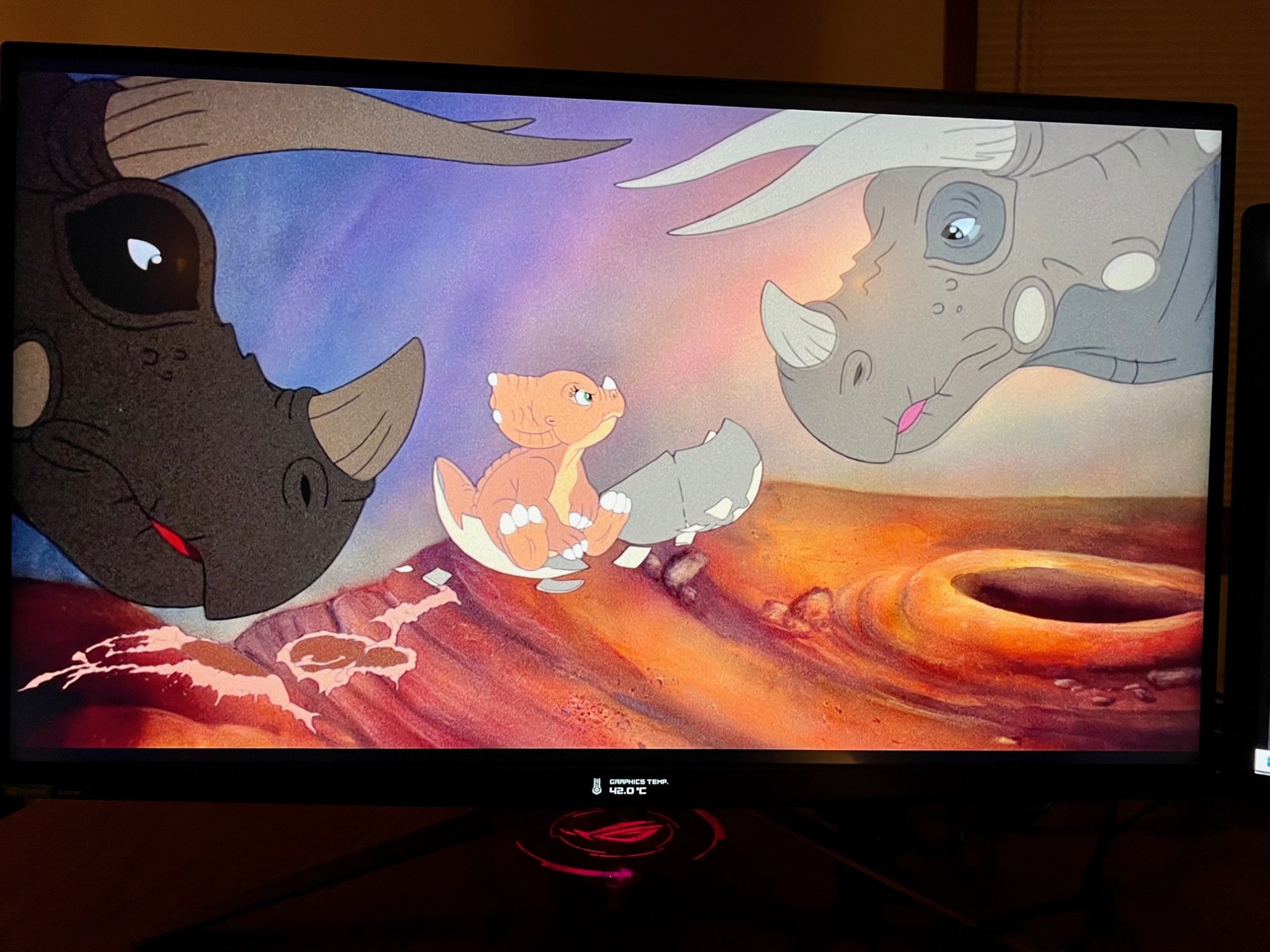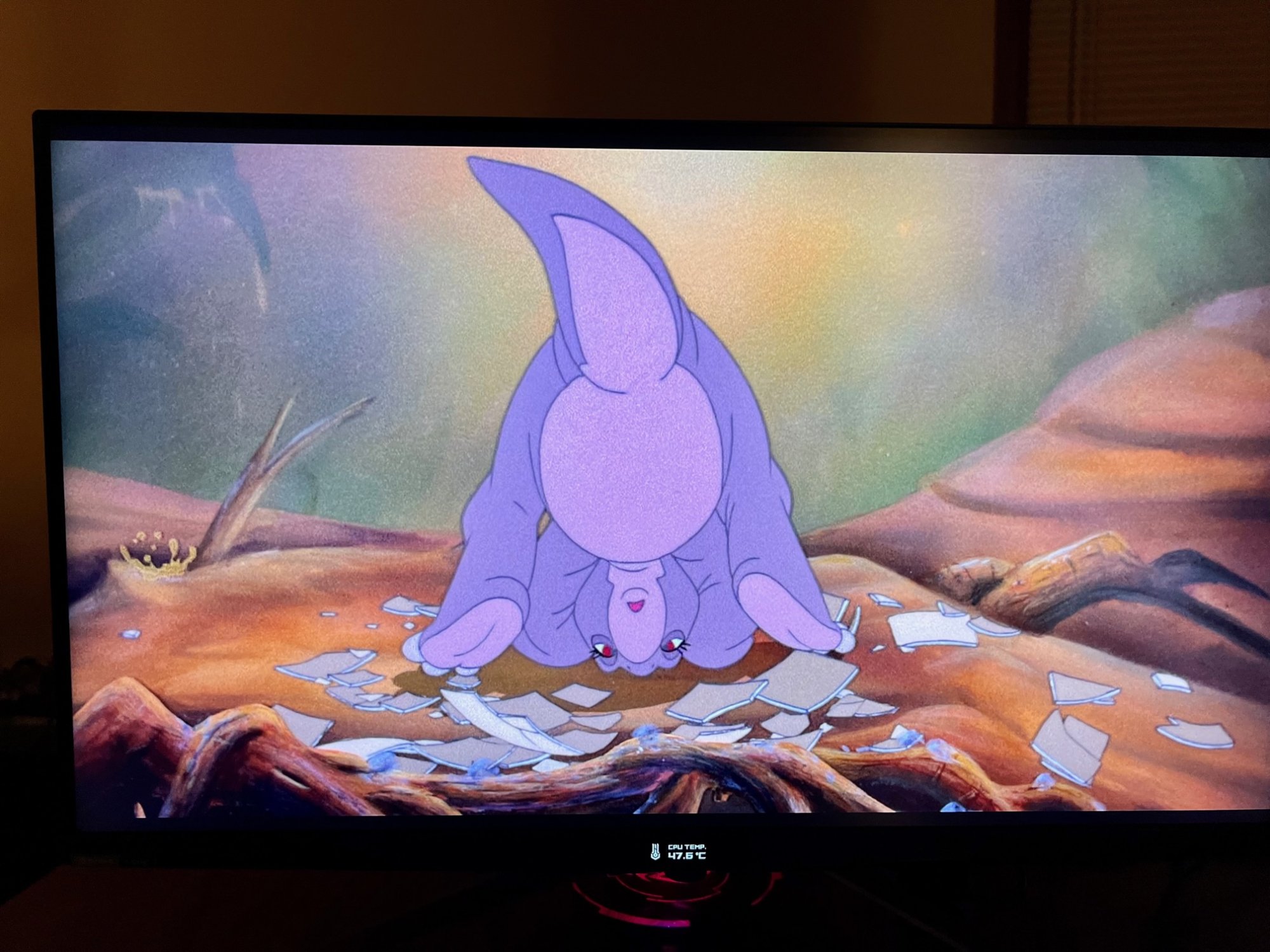3k with taxHow much was it?
Navigation
Install the app
How to install the app on iOS
Follow along with the video below to see how to install our site as a web app on your home screen.
Note: This feature may not be available in some browsers.
More options
You are using an out of date browser. It may not display this or other websites correctly.
You should upgrade or use an alternative browser.
You should upgrade or use an alternative browser.
PG32UQX - ASUS 32" 4K 144 Hz HDR1400 G-Sync Ultimate
- Thread starter Vega
- Start date
- Status
- Not open for further replies.
xDiVolatilX
2[H]4U
- Joined
- Jul 24, 2021
- Messages
- 2,515
Wow. What is it about this particular monitor that makes it worth the hefty price tag?3k with tax
I don’t know and at this point I’m too afraid to askWow. What is it about this particular monitor that makes it worth the hefty price tag?
Skyhopper01
Limp Gawd
- Joined
- Jul 6, 2021
- Messages
- 204
Wow, your in for one hell of a treat! Congrats.I never made it to Micro Center, but mine is arriving tomorrow. It will be my first time to game above 1080 (technically I run at 1200.) I hope it is great!
kramnelis
Gawd
- Joined
- Jun 30, 2022
- Messages
- 890
For SDR:
There is an option under the Color section called 'DP/HDMI SDR YCbCr sRGB Gamma'.
When it is turned ON, the monitor uses sRGB gamma.
When it is turned OFF, the monitor can use BT.1886 gamma. BT.1886 gamma also requires the Nvidia panel to set the Output Color Format from RGB to YCbCr444.
Once BT.1886 gamma is enabled, the SDR contrast is increased. The content can have deeper blacks and enhanced highlights. The increased brightness level on the monitor also helps.
BT.1886 gamma makes the SDR version of movies look much closer to the HDR version of movies because of the increased contrast.
There is also an option under the Image section called 'Display SDR Input'. You can choose Wide Gamut, which is Adobe color, if you like vivid colors to further increase the total dynamic range.
There is an option under the Color section called 'DP/HDMI SDR YCbCr sRGB Gamma'.
When it is turned ON, the monitor uses sRGB gamma.
When it is turned OFF, the monitor can use BT.1886 gamma. BT.1886 gamma also requires the Nvidia panel to set the Output Color Format from RGB to YCbCr444.
Once BT.1886 gamma is enabled, the SDR contrast is increased. The content can have deeper blacks and enhanced highlights. The increased brightness level on the monitor also helps.
BT.1886 gamma makes the SDR version of movies look much closer to the HDR version of movies because of the increased contrast.
There is also an option under the Image section called 'Display SDR Input'. You can choose Wide Gamut, which is Adobe color, if you like vivid colors to further increase the total dynamic range.
Hello everyone, I own a PG32UQX , and I am quite happy and satisfied. I would like to have a slightly bigger and glossy panel though, I would be fine with even a 55" so very different in size that I have had before.
Do you think samsung S95C could be a worthy replacement for the pg32? In the past several times I went back from an oled (lg cx, c1 etc) because I was never satisfied with the brightness. I have read and seen videos around where it is inferred that the samsung s95c will be much improved in terms of brightness. I wanted to know your opinion on this.
Do you think samsung S95C could be a worthy replacement for the pg32? In the past several times I went back from an oled (lg cx, c1 etc) because I was never satisfied with the brightness. I have read and seen videos around where it is inferred that the samsung s95c will be much improved in terms of brightness. I wanted to know your opinion on this.
xDiVolatilX
2[H]4U
- Joined
- Jul 24, 2021
- Messages
- 2,515
You look like a good candidate for the QN90B 50 or 55. It's a beast of a display.Hello everyone, I own a PG32UQX , and I am quite happy and satisfied. I would like to have a slightly bigger and glossy panel though, I would be fine with even a 55" so very different in size that I have had before.
Do you think samsung S95C could be a worthy replacement for the pg32? In the past several times I went back from an oled (lg cx, c1 etc) because I was never satisfied with the brightness. I have read and seen videos around where it is inferred that the samsung s95c will be much improved in terms of brightness. I wanted to know your opinion on this.
Thanks for advice, but i don't want a VA. If i have to quit the PG32 i want an oled glossy panel, with a good brightness and without an aggressive ABL / ASBL system. Untill that i feel good wiht my pg32You look like a good candidate for the QN90B 50 or 55. It's a beast of a display.
III_Slyflyer_III
[H]ard|Gawd
- Joined
- Sep 17, 2019
- Messages
- 1,252
You need Asus Armory Crate installed... then you can display a wide range of items. I use mine for GPU Temp, CPU temp and FPS Counter.Sprung how do you have the CPU Temp show up on the little OLED screen on the monitor? Does that require Aura Sync or some 3rd party program?
Xar
Limp Gawd
- Joined
- Dec 15, 2022
- Messages
- 227
OLED over this slow abysmal of blooming everyday of the week.
kramnelis
Gawd
- Joined
- Jun 30, 2022
- Messages
- 890
Even with blooming PG32UQX easily obliterates whatever OLED you got. OLED loses tons of color and contrast at HDR. The accuracy on OLED is a lot lower. The SDR on PG32UQX can even have more range on OLED HDR. All you can get from OLED is a little fast but dim SDR experience that even puts off competitive players.OLED over this slow abysmal of blooming everyday of the week.
Last edited:
Xar
Limp Gawd
- Joined
- Dec 15, 2022
- Messages
- 227
"Obliterates whatever OLED"... There're only a few things it does better than OLED: Brightness, Color Coverages (no longer the case with QD-OLED in play), no Burn-in, and take a very long time to degrade. That's it.Even with blooming PG32UQX easily obliterates whatever OLED you got. OLED loses tons of color and contrast at HDR. The accuracy on OLED is a lot lower. The SDR on PG32UQX can even have more range on OLED HDR. All you can get from OLED is a little fast but dim SDR experience that even puts off competitive players.
Other than these aspects, it's a complete mismatch. OLED shits on FALD Mini-LED LCDs 9/10 period.
Only MicroLED, QD-MicroLED, True QNED, QDEL/EL-QD, and True 3D Display can beat it.
kramnelis
Gawd
- Joined
- Jun 30, 2022
- Messages
- 890
Whatever OLED you got is far from accurate than PG32UQX. OLED doesn't have more accuracy if it cannot hold brightness. The accuracy of brightness and contrast will drop off the chart."Obliterates whatever OLED"... There're only a few things it does better than OLED: Brightness, Color Coverages (no longer the case with QD-OLED in play), no Burn-in, and take a very long time to degrade. That's it.
Other than these aspects, it's a complete mismatch. OLED shits on FALD Mini-LED LCDs 9/10 period.
Only MicroLED, QD-MicroLED, True QNED, QDEL/EL-QD, and True 3D Display can beat it.
You have about 3% accurate brightness in consumer level OLED and that's about it. The best OLED you can buy like PA32DC is still HDR400 and you don't have it. You buy other OLED you get stuck in SDR with dim images.
kramnelis
Gawd
- Joined
- Jun 30, 2022
- Messages
- 890
Just pulled out the dng raw capture file. Get the jxr HDR images. The captured data is enough to compare the image accuracy between HDR1000 monitors like FALDL PG35VQ vs OLED like AW3423DW.
It's always the FALD monitor like PG35VQ look much closer to the original HDR images. OLED loses at least two times dynamic range with only a few peak highlights that barely reach 400nits.
HDR version
PNG version
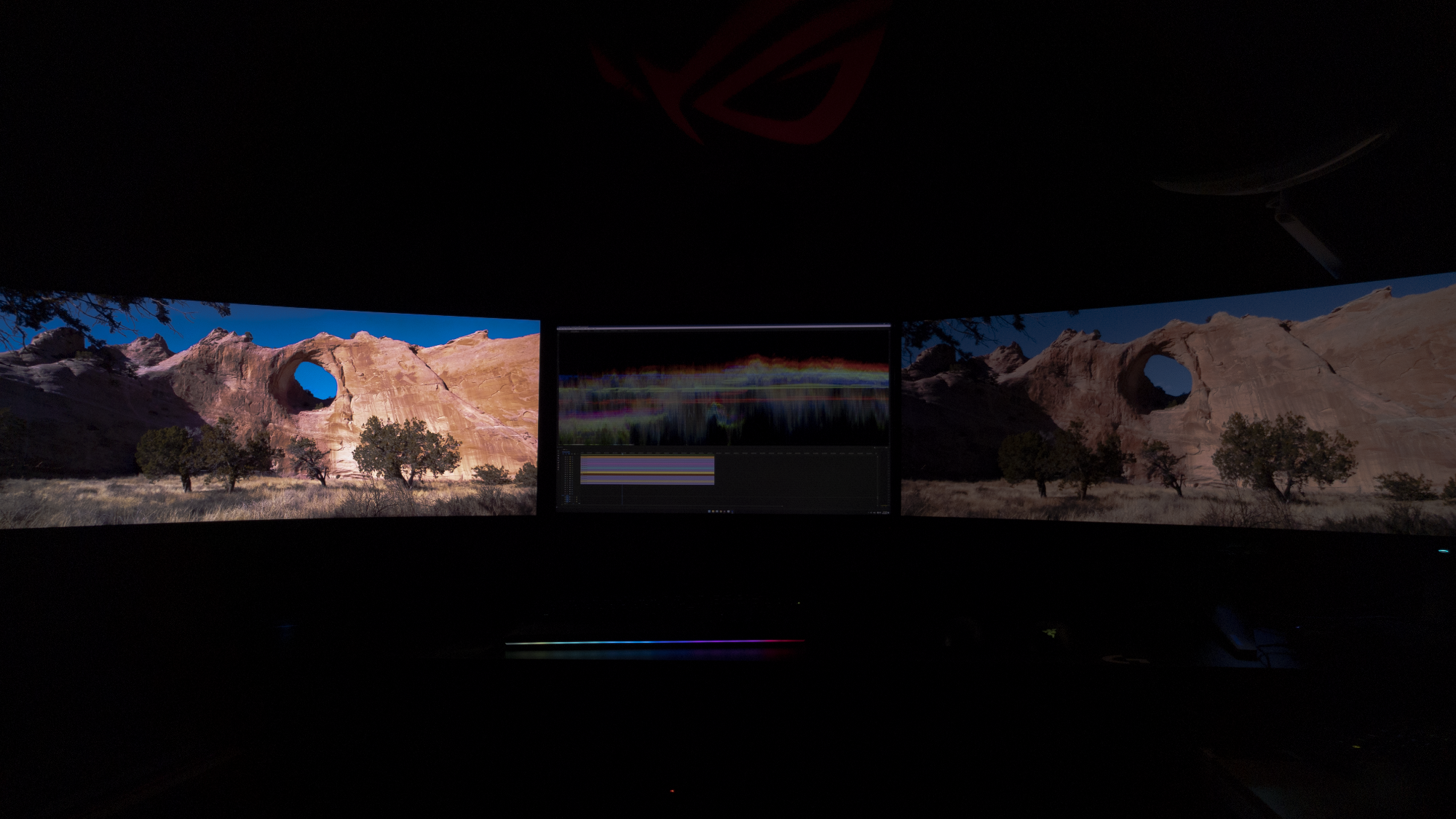
AW3423DW
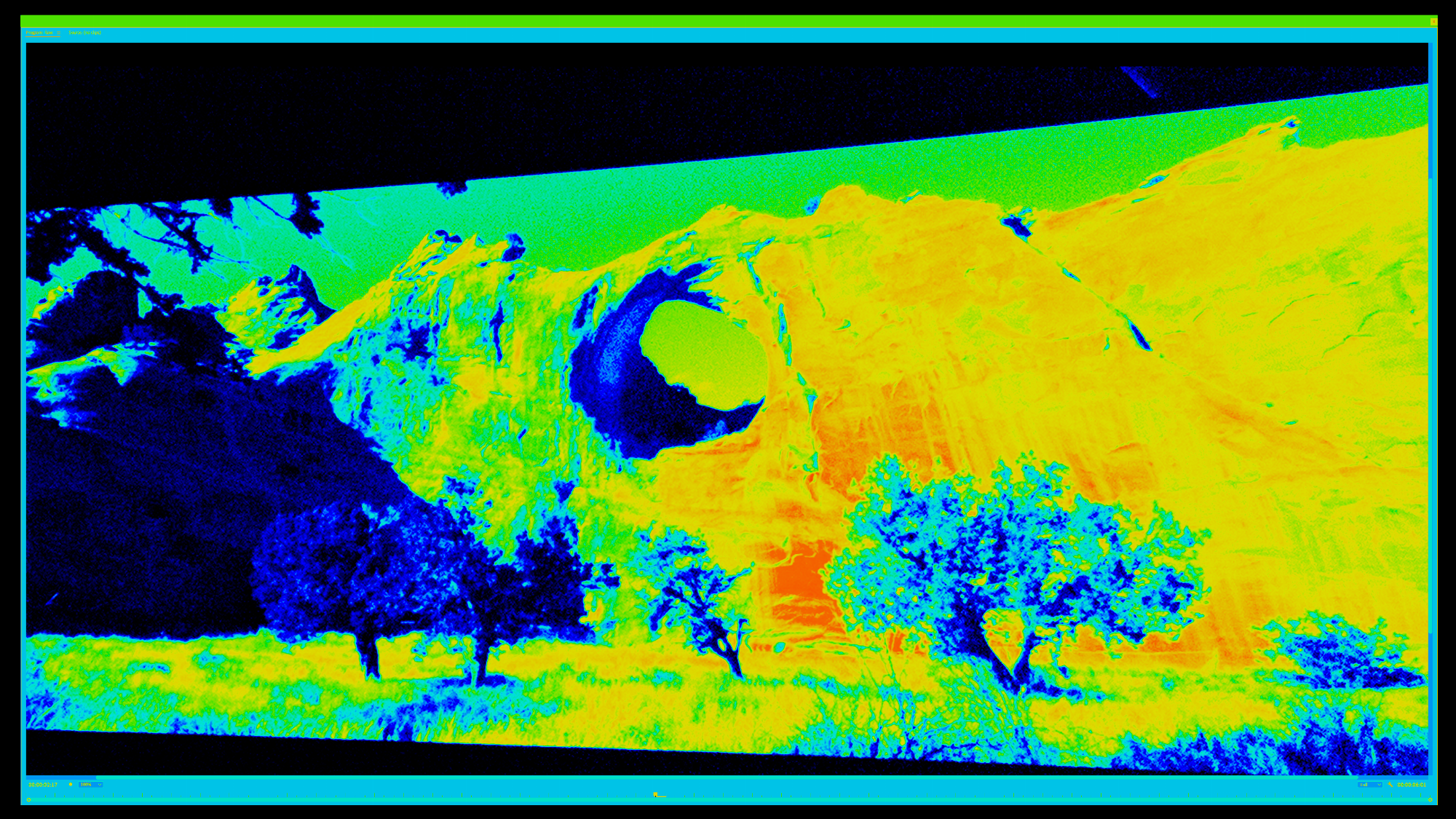
PG35VQ
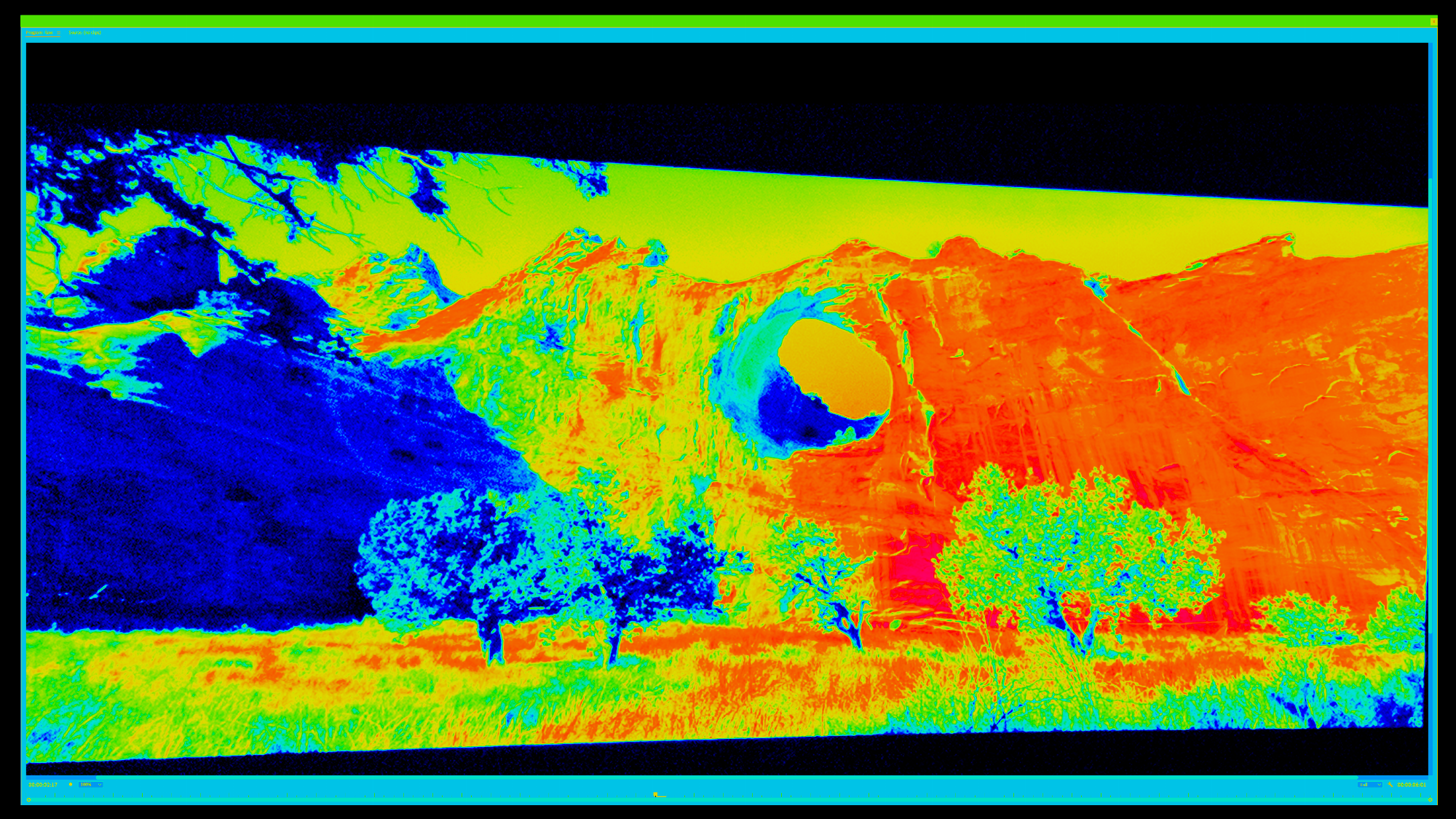
Original HDR
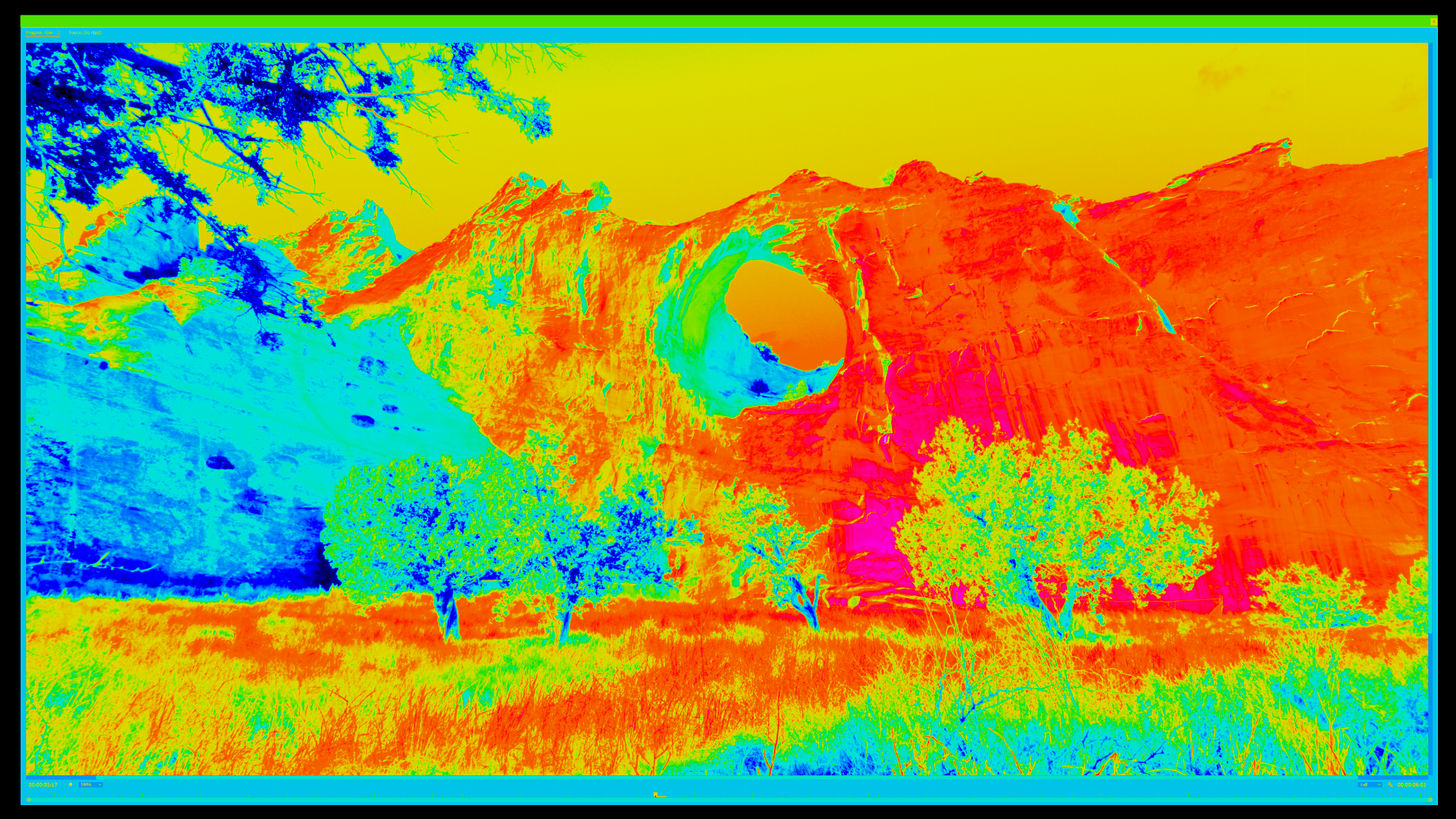
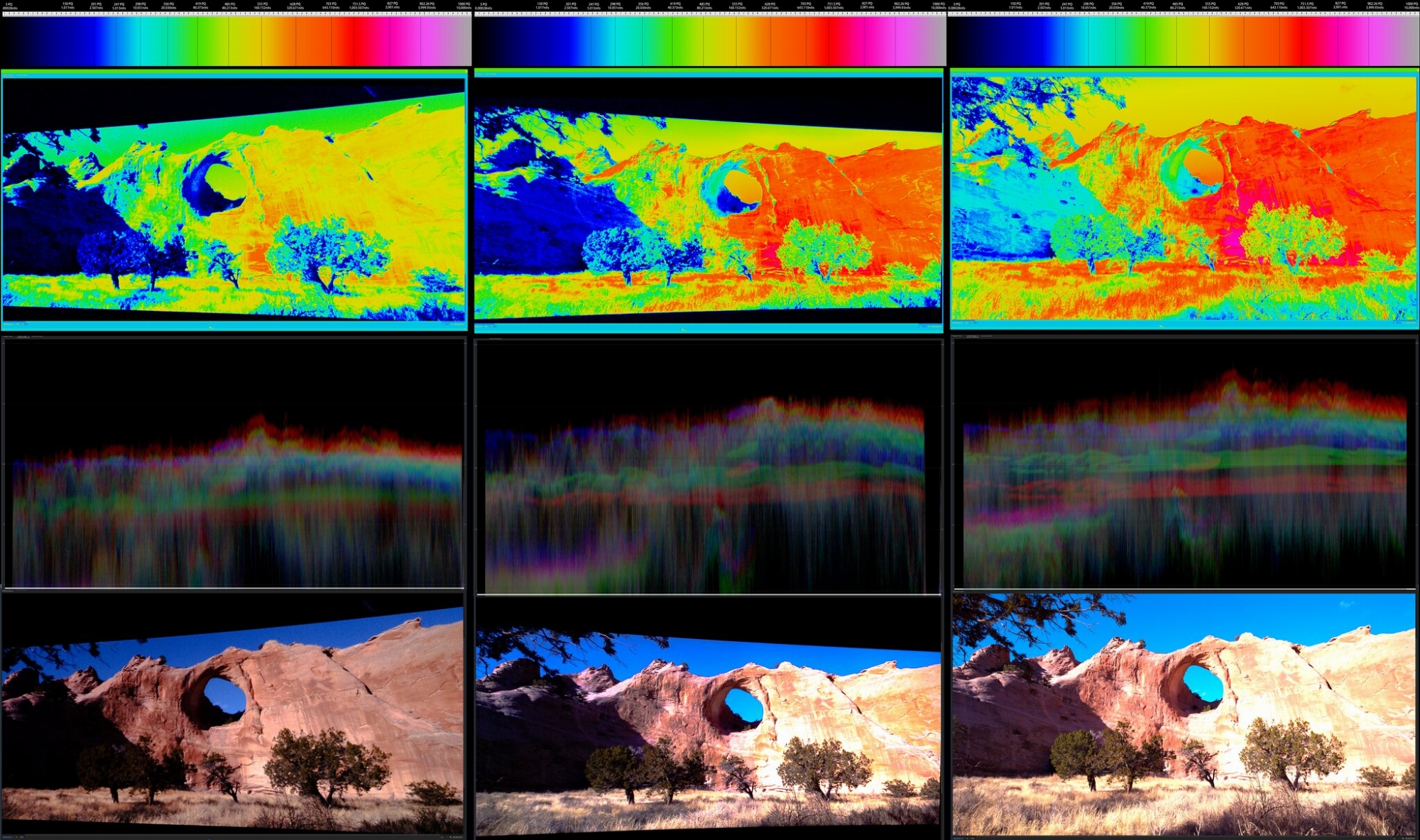
It's always the FALD monitor like PG35VQ look much closer to the original HDR images. OLED loses at least two times dynamic range with only a few peak highlights that barely reach 400nits.
HDR version
PNG version

AW3423DW

PG35VQ

Original HDR


Thank you very much for this comparison. It was this kind of problem that made me give up OLED to push me to buy the PG32UQX although very expensive. I've been meaning to ask you, do you think the upcoming QD oled TVs like s95c or the a95l will also be struggling like this?Just pulled out the dng raw capture file. Get the jxr HDR images. The captured data is enough to compare the image accuracy between HDR1000 monitors like FALDL PG35VQ vs OLED like AW3423DW.
It's always the FALD monitor like PG35VQ look much closer to the original HDR images. OLED loses at least two times dynamic range with only a few peak highlights that barely reach 400nits.
I recently saw some classy tech videos where he showed how QDOLED actually manage to hold brightness quite well over time. It would be great to see a comparison like you did, between the PG32UQX and the modern oled TVs that will be released soon.
Actually, the only real thing I miss and wish the PG32UQX had is a GLOSSY panel, which I find really fabulous compared to a matte one. And also an increased size such as a 42" or 55" at max
kramnelis
Gawd
- Joined
- Jun 30, 2022
- Messages
- 890
These displays have firmware with ABL in it. If you can dial the firmware to control the ABL then they can do fullfield at max brightness without any drop. With an extra QD layer the brightness can be pushed to 2000nits only in the lab so they can barely look as bright as PG32UQX. It's a matter how Samsung decide to push it with burn-in prevention.Thank you very much for this comparison. It was this kind of problem that made me give up OLED to push me to buy the PG32UQX although very expensive. I've been meaning to ask you, do you think the upcoming QD oled TVs like s95c or the a95l will also be struggling like this?
I recently saw some classy tech videos where he showed how QDOLED actually manage to hold brightness quite well over time. It would be great to see a comparison like you did, between the PG32UQX and the modern oled TVs that will be released soon.
Actually, the only real thing I miss and wish the PG32UQX had is a GLOSSY panel, which I find really fabulous compared to a matte one. And also an increased size such as a 42" or 55" at max
Also a TV is not a monitor. The advantage of a bigger size TV is that it's easier to make to output more brightness. When it comes down to 32" with denser pixels the situation is still the same.
Last edited:
Ok perfect, so there is hope that this year the various TVs coming out, can at least come close to our pg32 in terms of brightness. Thank you and let's hope for the evolution of this technology. At the same time I also notice a refinement of FALD technology, with many more zones, and hopefully in the future we will have monitors with 10 thousand zones and very fast in handling.These displays have firmware with ABL in it. If you can dial the firmware to control the ABL then they can do fullfield at max brightness without any drop. With an extra QD layer the brightness can be pushed to 2000nits in the lab so they can look as bright as PG32UQX. It's a matter how Samsung decide to push it with burn-in prevention.
Also a TV is not a monitor. The advantage of a bigger size TV is that it's easier to make to output more brightness. When it comes down to 32" with denser pixels the situation is still the same.
I don't think OLED televisions will ever approach the brightness levels of mini-LED aside from in a lab, simply because the reality is manufacturers would have to price them so high to warrant them against burn-in within 3 years. It's a different situation than from the AW QD-OLED (and that has ABL anyways) since most TV users are not hardcore videophiles, and they have to keep the price relatively reasonable. Most people don't buy TVs every 3 years, and the average user would get upset if they saw burn-in within this time frame. OLEDs also suffer from brightness decay over time, on average, OLEDs will lose 20-30% of their brightness in 6 months if used 8 hrs/day. Most users may not notice this because of day-to-day use and the gradual decay. Inorganic LEDs do not have this issue at all, they are simply way more durable. That is why the holy grail is a per pixel inorganic LED (like micro-LED).
Last edited:
Hey guys, I just picked this bad boy up. I upgraded to Windows 11 for the Auto HDR settings.
I'm loving it. This is a better step up than 144hz. Not as good as getting my first SSD though.
When HDR is enabled, I noticed a lot of my display options get greyed out. Is there anyway to prevent this from happening?
I read there was a way in Windows 10.
I'm loving it. This is a better step up than 144hz. Not as good as getting my first SSD though.
When HDR is enabled, I noticed a lot of my display options get greyed out. Is there anyway to prevent this from happening?
I read there was a way in Windows 10.
kramnelis
Gawd
- Joined
- Jun 30, 2022
- Messages
- 890
When HDR is enabled. The gamma, dark boost, sdr presets are supposed to be locked.Hey guys, I just picked this bad boy up. I upgraded to Windows 11 for the Auto HDR settings.
I'm loving it. This is a better step up than 144hz. Not as good as getting my first SSD though.
When HDR is enabled, I noticed a lot of my display options get greyed out. Is there anyway to prevent this from happening?
I read there was a way in Windows 10.
Coo, thanks. Time to stop overthinking and start enjoying this thing.When HDR is enabled. The gamma, dark boost, sdr presets are supposed to be locked.
III_Slyflyer_III
[H]ard|Gawd
- Joined
- Sep 17, 2019
- Messages
- 1,252
It is amazing monitor... games have never looked better at 4K. If you have the card to drive it, its an absolutely smooth experience too. Enjoy.Coo, thanks. Time to stop overthinking and start enjoying this thing.
Bigmonitorguy
Limp Gawd
- Joined
- Jan 2, 2020
- Messages
- 277
It is amazing monitor... games have never looked better at 4K. If you have the card to drive it, its an absolutely smooth experience too. Enjoy.
I like this monitor as well. Both the PG32UQX and XG321UG are very capable and have great HDR support. However, I have to say that the motion clarity isn't great. It's good-enough, but not great. This panel is pretty slow, unfortunately. I personally prefer to game on the AW3423DW and the 45GR95QE even though they are only 1440p and not as bright.
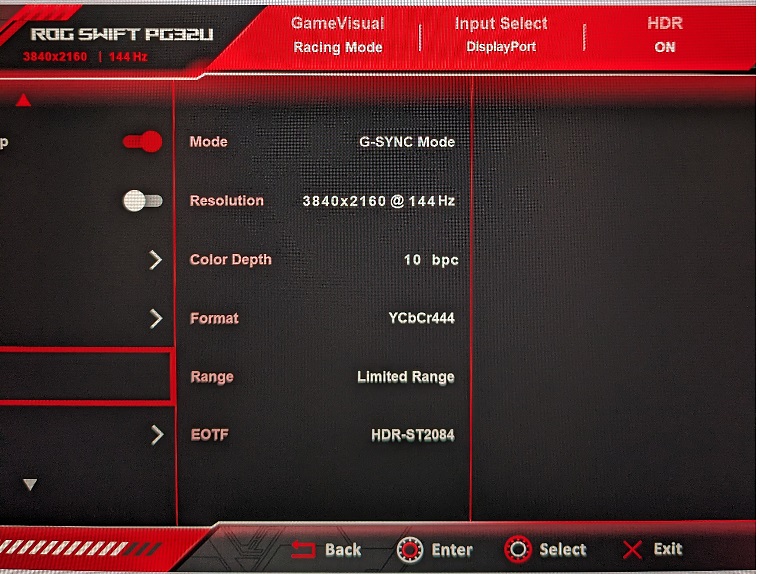
I am using YCbCr444 and only have limited dynamic range available.
Does anyone know why that is?
Also I'm seeing HDR-ST2084 under EOTF. Someone mentioned BT 2100.
---
Lastly FYI.
Amazon has this monitor at $1,799 renewed with a 4 year protection warranty via asurion.
Might be a good deal.
Bet you'd be waiting around for service on that warranty.
As an Amazon Associate, HardForum may earn from qualifying purchases.
View attachment 558627
I am using YCbCr444 and only have limited dynamic range available.
Does anyone know why that is?
Also I'm seeing HDR-ST2084 under EOTF. Someone mentioned BT 2100.
---
Lastly FYI.
Amazon has this monitor at $1,799 renewed with a 4 year protection warranty via asurion.
Might be a good deal.
Bet you'd be waiting around for service on that warranty.
Go to the display settings of your GPU you should be able to do RGB 4k 144hz with 10bpc over DP 1.4.
As an Amazon Associate, HardForum may earn from qualifying purchases.
III_Slyflyer_III
[H]ard|Gawd
- Joined
- Sep 17, 2019
- Messages
- 1,252
Set to RGB (No need to use YCbCr444 in Windows 11 for gaming or movies on this monitor). RGB will give you full range HDR, and you can actually set your color to 12bpc.View attachment 558627
I am using YCbCr444 and only have limited dynamic range available.
Does anyone know why that is?
Also I'm seeing HDR-ST2084 under EOTF. Someone mentioned BT 2100.
---
Lastly FYI.
Amazon has this monitor at $1,799 renewed with a 4 year protection warranty via asurion.
Might be a good deal.
Bet you'd be waiting around for service on that warranty.
As an Amazon Associate, HardForum may earn from qualifying purchases.
I just want to say I am really loving this monitor. Yes I know it can bloom around the mouse pointer while I am doing my day job with HDR turned off, but its really not a big deal. The gaming and media is great. I am currently playing CyberPunk 2077 for the first time and its just gorgeous. Even old games like Subnautica look great. Just last night I was using Kodi / Seren to watch the fight scenes in Rocky I and II and I was surprised to find I could select sources with HDR. They must have been blueray remasters. They looked great!
I just changed mine from 10 to 12. Is there any downsides to doing this?Set to RGB (No need to use YCbCr444 in Windows 11 for gaming or movies on this monitor). RGB will give you full range HDR, and you can actually set your color to 12bpc.
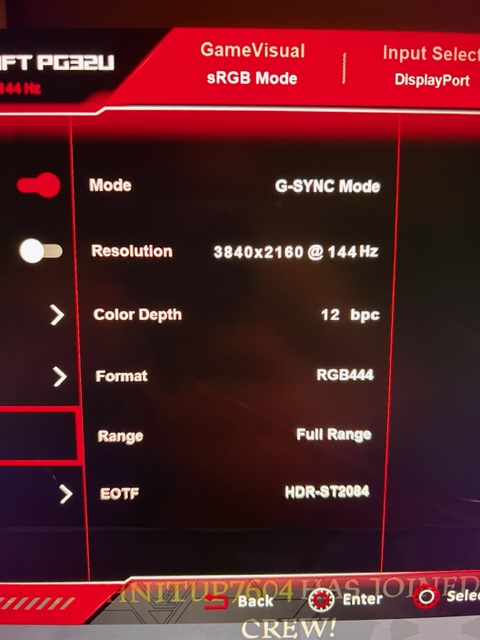
Last edited:
III_Slyflyer_III
[H]ard|Gawd
- Joined
- Sep 17, 2019
- Messages
- 1,252
None whatsoever... enjoy!I just changed mine from 10 to 12. Is there any downsides to doing this?
Skyhopper01
Limp Gawd
- Joined
- Jul 6, 2021
- Messages
- 204
Going back to older games is a treat. Recently played Titanfall 2 again and with Auto HDR on it looked amazing. Gotta love Auto HDR.I just want to say I am really loving this monitor. Yes I know it can bloom around the mouse pointer while I am doing my day job with HDR turned off, but its really not a big deal. The gaming and media is great. I am currently playing CyberPunk 2077 for the first time and its just gorgeous. Even old games like Subnautica look great. Just last night I was using Kodi / Seren to watch the fight scenes in Rocky I and II and I was surprised to find I could select sources with HDR. They must have been blueray remasters. They looked great!
xDiVolatilX
2[H]4U
- Joined
- Jul 24, 2021
- Messages
- 2,515
For real. I launched Arkham Origins and was treated to a nice little auto HDR function automatically. Game looks absolutely fantastic for it's age.Going back to older games is a treat. Recently played Titanfall 2 again and with Auto HDR on it looked amazing. Gotta love Auto HDR.
MistaSparkul
2[H]4U
- Joined
- Jul 5, 2012
- Messages
- 3,523
Going back to older games is a treat. Recently played Titanfall 2 again and with Auto HDR on it looked amazing. Gotta love Auto HDR.
If a game doesn't support AutoHDR you can also try out Special K. AutoHDR seems to take a while to add support for the newest games and I've found Special K to be a great alternative if you don't want to wait for the game to receive AutoHDR support.
Baasha
Limp Gawd
- Joined
- Feb 23, 2014
- Messages
- 249
Agree that AutoHDR is an amazing feature. Makes an old turd like GTA V look amazing (w/ mods of course).
Didn't realize the color settings should be RGB - I thought YCbCr444 was the "full/maximum" color range(?). Also, is this monitor really 12-bit or...? So RGB + 12-bit is the way to go?
Didn't realize the color settings should be RGB - I thought YCbCr444 was the "full/maximum" color range(?). Also, is this monitor really 12-bit or...? So RGB + 12-bit is the way to go?
III_Slyflyer_III
[H]ard|Gawd
- Joined
- Sep 17, 2019
- Messages
- 1,252
RGB is what you want over DP1.4 DSC for full range. Monitor is true 10-bit, but can do 12-bit FRC. I say set it to 12bit and forget about it. You're likely not going to run into 12bit content at all gaming, but on the off chance you do outside gaming, you can do it. It does not hurt anything or distort anything by having it on. It uses the same bandwidth as 10bit on this monitor.Agree that AutoHDR is an amazing feature. Makes an old turd like GTA V look amazing (w/ mods of course).
Didn't realize the color settings should be RGB - I thought YCbCr444 was the "full/maximum" color range(?). Also, is this monitor really 12-bit or...? So RGB + 12-bit is the way to go?
Price drop to $2,299 @ B&H (reputable NYC brick and mortar retailer)
https://www.bhphotovideo.com/c/search?q=pg32uqx&sts=ma
https://www.bhphotovideo.com/c/search?q=pg32uqx&sts=ma
III_Slyflyer_III
[H]ard|Gawd
- Joined
- Sep 17, 2019
- Messages
- 1,252
Thats the lowest in awhile... I got mine in December of 2022 for $2379 at Micro Center with an amazon price match.Price drop to $2,299 @ B&H (reputable NYC brick and mortar retailer)
https://www.bhphotovideo.com/c/search?q=pg32uqx&sts=ma
kramnelis
Gawd
- Joined
- Jun 30, 2022
- Messages
- 890
Agree that AutoHDR is an amazing feature. Makes an old turd like GTA V look amazing (w/ mods of course).
Didn't realize the color settings should be RGB - I thought YCbCr444 was the "full/maximum" color range(?). Also, is this monitor really 12-bit or...? So RGB + 12-bit is the way to go?
HDR doesn't matter for neither YCbCR/BT1866 gamma nor sRGB color space because HDR on PG32UQX uses ST2084 Gamma/EOTF + Rec.2020 color space.View attachment 558627
I am using YCbCr444 and only have limited dynamic range available.
Does anyone know why that is?
Also I'm seeing HDR-ST2084 under EOTF. Someone mentioned BT 2100.
YCbCr444/BT1866 gamma + Wide Gamut Adobe RGB color space is the full color range for SDR. Set only RGB format in Nvidia Panel has less contrast compared to YCbCr.
You can download and install the official WHQL profile for PG32UQX from ASUS website. It has pre-calibrated SDR profile for the both sRGB, wide gamut Adobe RGB. Then you can disable DP/HDMI SDR YCbCr sRGB Gamma to use YCbCR444/BT1866 to have more contrast. Use wide gamut SDR to have more colors.
With these two plus 500+nits peak brightness you are basically seeing HDR400 in SDR without oversaturated color unlike most of the monitors out there with uncalibrated Adobe color overshoot to Rec.2020. Now you can know why this monitor is worth $3,000 because it can have accurate Adobe RGB profile pre-calibrated for you. If a monitor cannot be accurate in Adobe color space then it cannot be accurate in higher Rec.2020 color space in HDR.
Below pictures show it all.
This is the jpg SDR screenshot from Forza Horizon. Download the jxr image to view in Windows Photo in HDR mode to compare the emulated version of SDR.
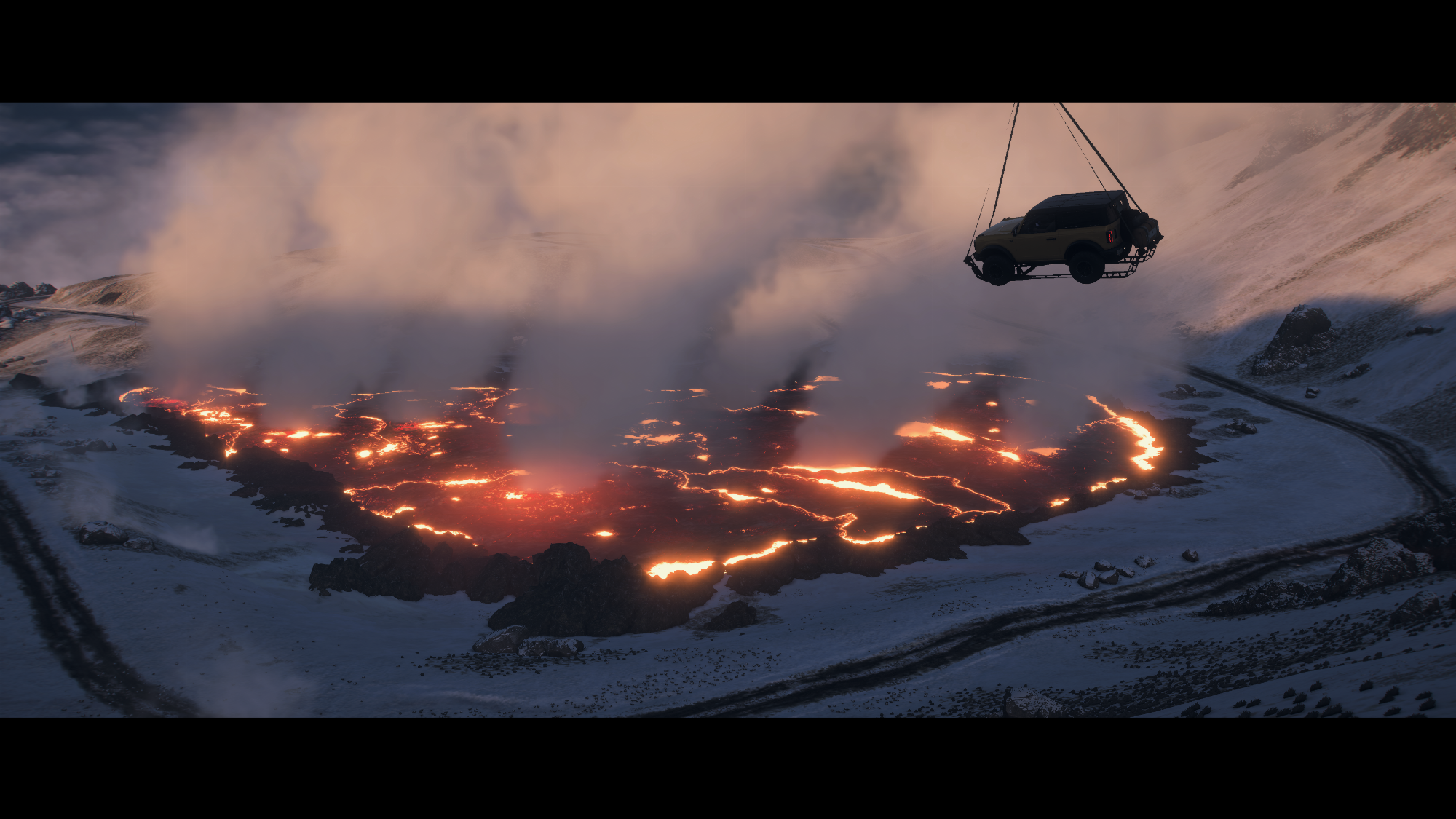
Emulated SDR sRGB 80nits
Emulated SDR BT1866 + sRGB + high brightness
Emulated SDR BT1866 + WideGamut + high brightness
The 2nd and 3rd images are what it looks like on PG32UQX, PG27UQ, PG35VQ with BT1866+Wide Gamut high brightness SDR
Then there is the 4th image from the actual HDR screenshot with 650nits cap.
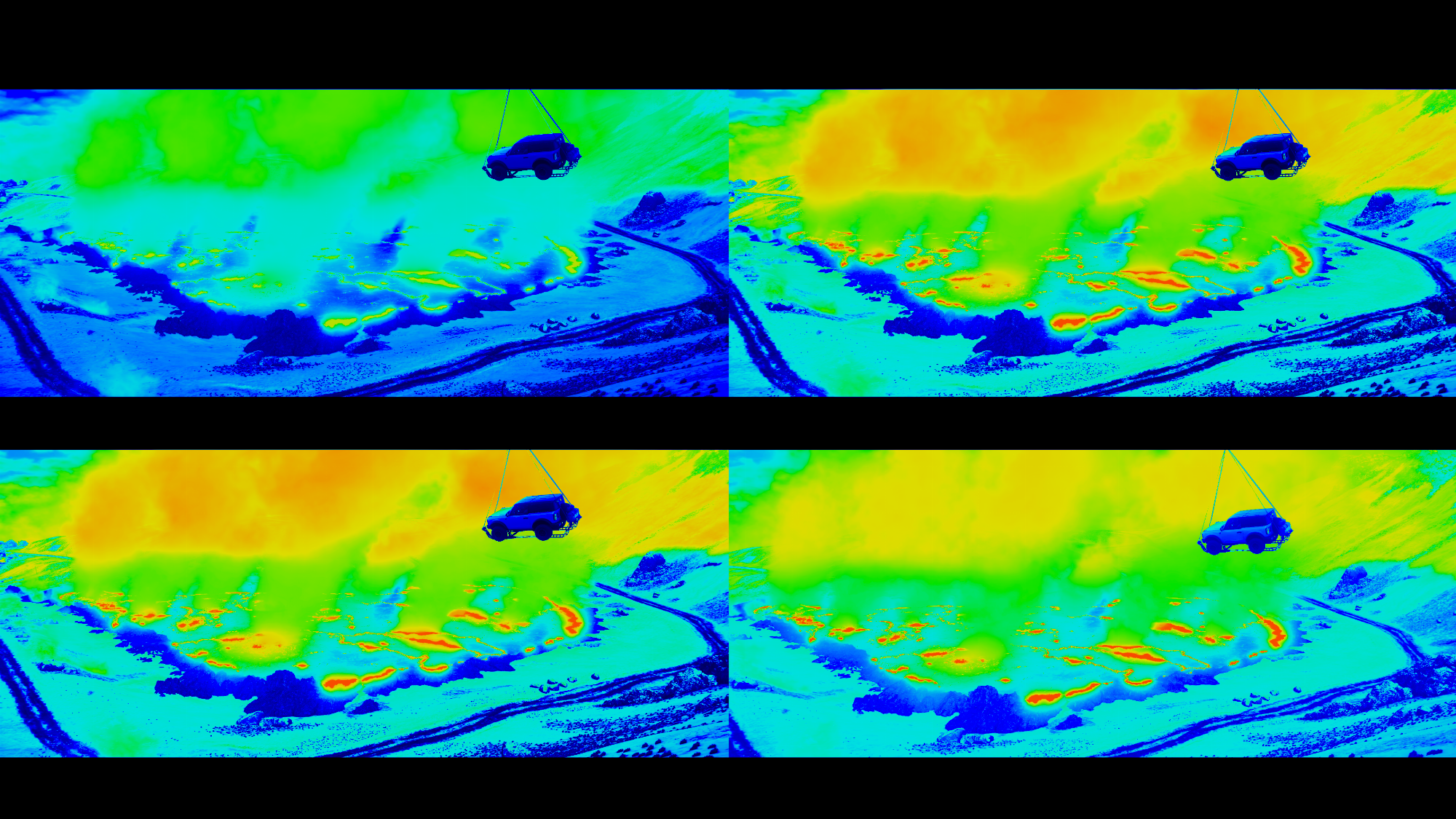
- Status
- Not open for further replies.
![[H]ard|Forum](/styles/hardforum/xenforo/logo_dark.png)
